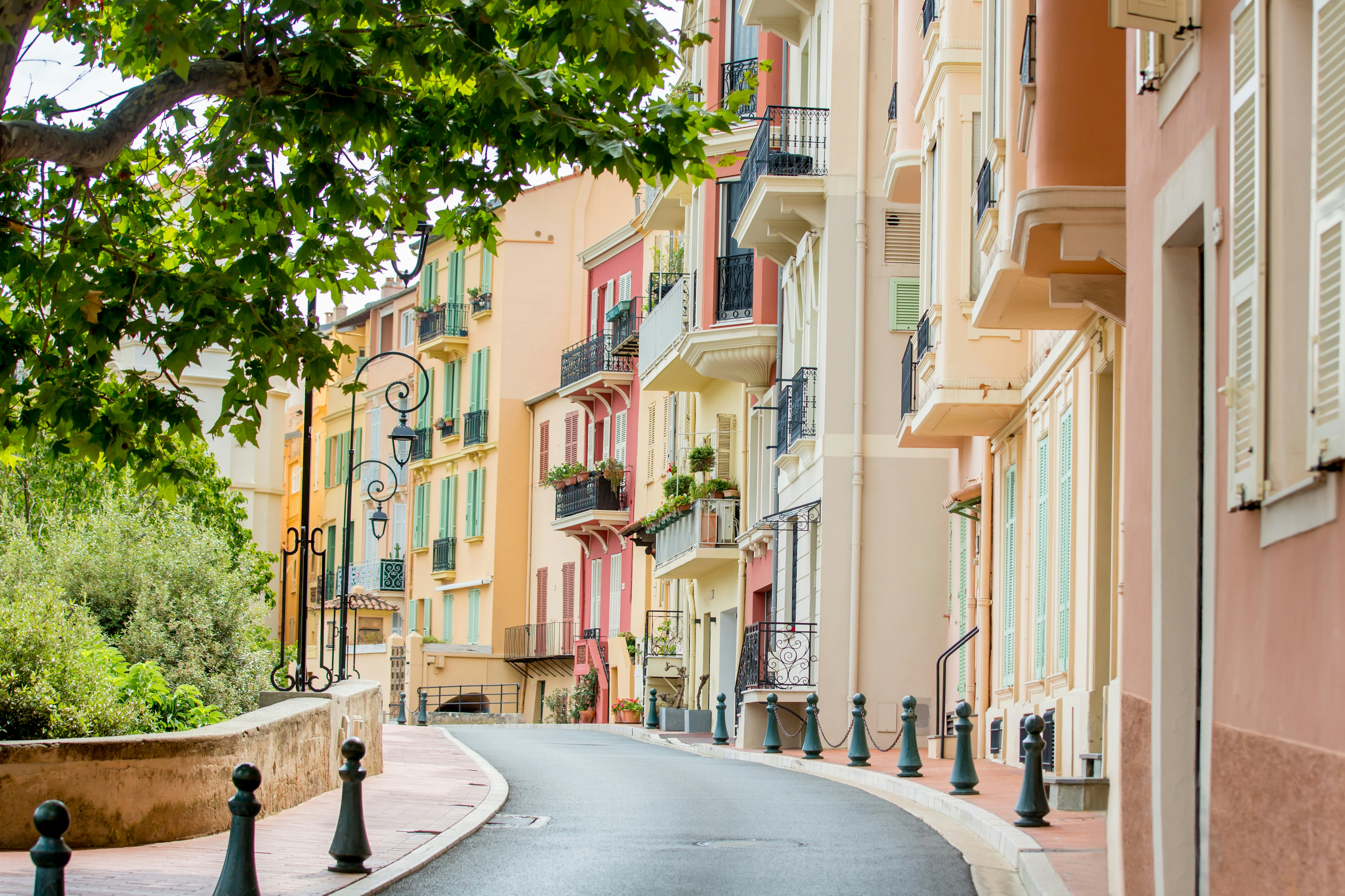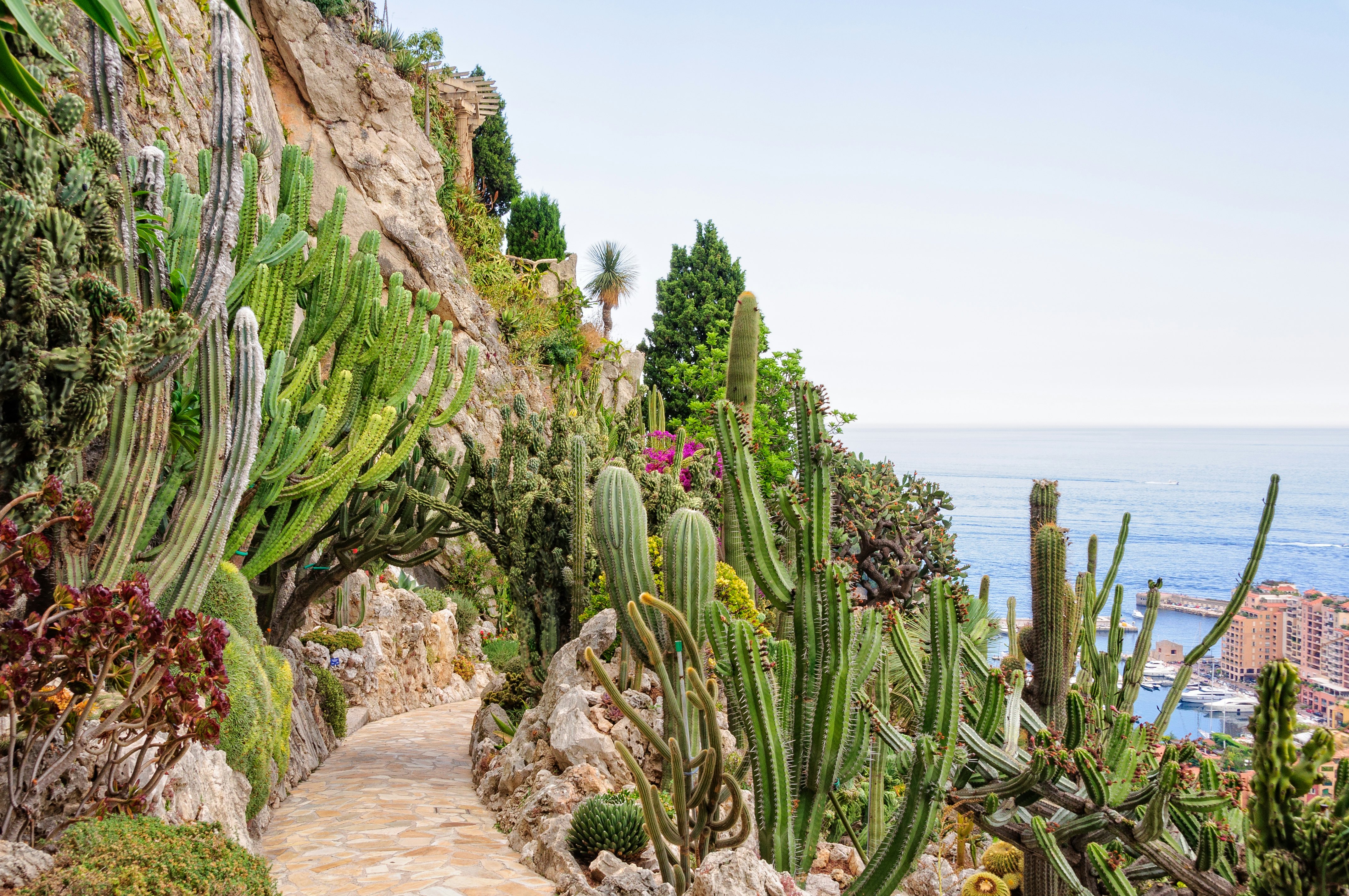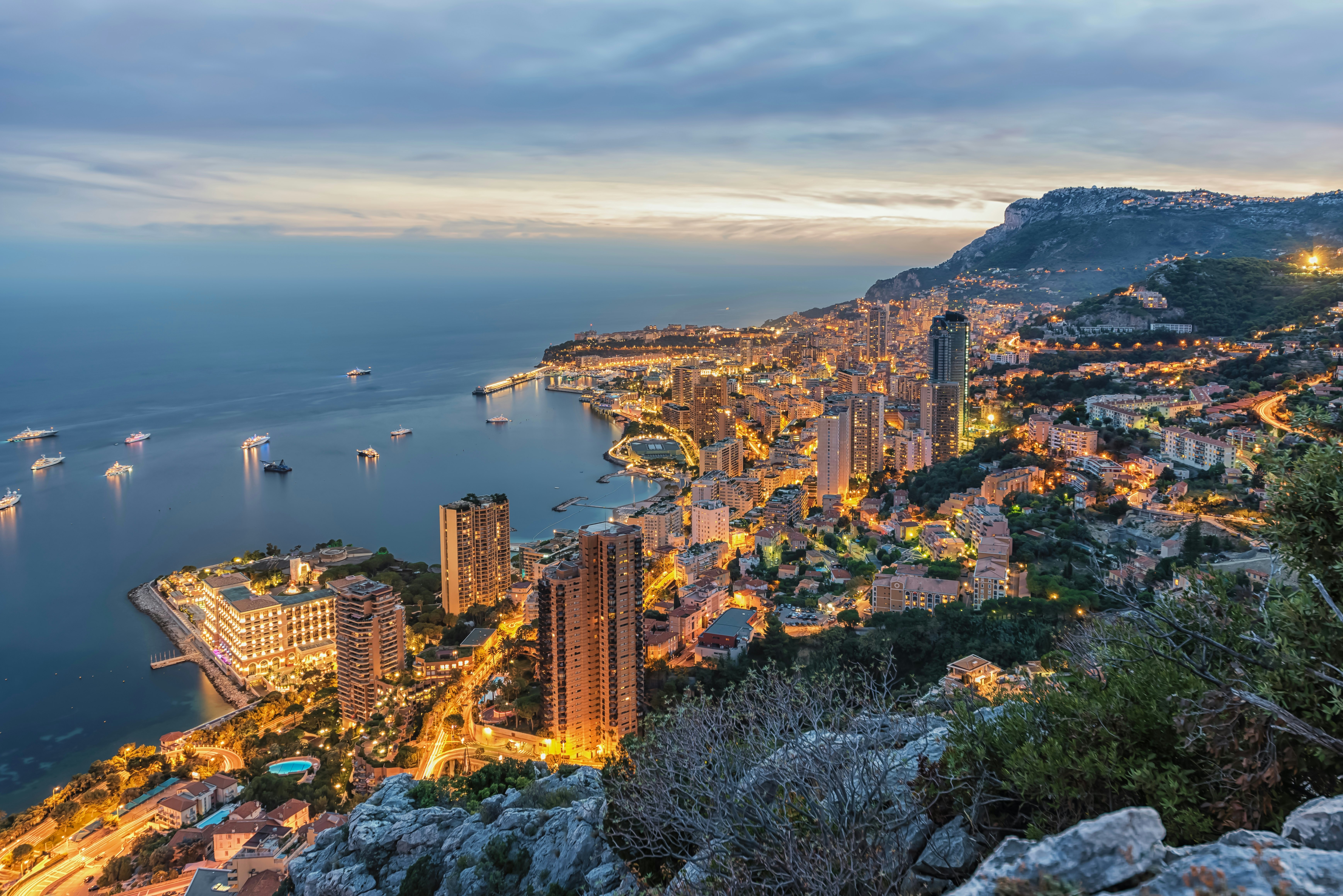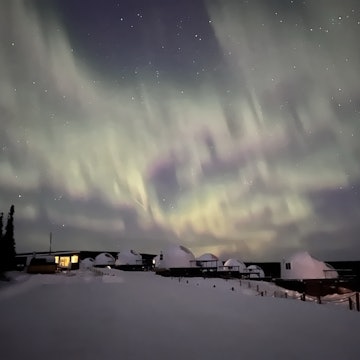

Monaco has the usual glitz and glam to offer, but also an array of things to see beyond. atomov/Shutterstock
Call it the ultimate pivot. In 1861, when Monaco was forced to cede most of its territory to France, you wouldn’t blame the ruling Grimaldi family for retreating into the depths of its 13th-century Genoese castle to lick their wounds.
But this isn’t one of Europe’s longest-ruling royal families for nothing, and they fought back, smartly, turning the postage stamp-sized territory they were left with into a destination that would become a byword for glitz and glamour. Citrus groves were ripped out and replaced with an ornate casino fit for the world’s high rollers and glorious Belle Epoque hotels for them to sleep in.
Prince Rainier III — “the builder Prince” — and his son, the current sovereign Prince Albert II, have clawed back some territory since the 1950s, thanks to their efforts to reclaim land from the sea, yet “smallest” is one of the many superlatives still used to describe Monaco. It’s the second smallest country, with the costliest real estate in the world and the most densely populated territory. Those extremes are matched by people’s general opinion about Monaco — you either love it or hate it.
I would guess that many of those in the latter camp have only spent a few hours in the principality, touring the places where you’re guaranteed to find Monaco’s well-publicized ostentatious displays of wealth.
But Monaco warrants more time to go beyond the headline attractions, to meet locals bringing back old traditions, enjoy unexpected culinary highlights and wander its many green spaces: in a nutshell, to realise that there’s much more to Monaco than the millionaire lifestyle.

When should I go to Monaco?
As the world’s most densely populated country, Monaco always feels busy, so if crowds aren’t your thing, steer clear in April, when the Rolex Monte-Carlo Masters tennis tournament rolls into town, late September when the yachting world descends for the Monaco Yacht Show and, the biggest of them all, late May (as of 2026, early June) for the Monaco Grand Prix. Of course, the Grand Prix circuit isn’t erected overnight and stands and barriers start creating headaches for navigating the principality from late March onwards, particularly since there’s also the Monaco ePrix in the lead-up and, every second year, the Grand Prix Historique de Monaco (Historic Grand Prix).
Summer can be heaving with day-trippers, but, because so many residents leave for the school holidays, you can find pockets of calm if you stay away from places like Casino Square. March and October are good shoulder season bets in terms of crowds and lower accommodation prices, although the weather can be unpredictable. December is particularly magical as Monaco dresses up for Christmas. The Village de Noël, on the Port Hercules harbourfront, is the most festive Christmas market in the region.
How much time should I spend in Monaco?
Monaco is the classic day-trip destination from Nice or Cannes, and you’ll see busloads of tourists racing to cram a visit to the Casino de Monte-Carlo and the Palais Princier de Monaco into just a few hours. With a full day, you can cover a lot of ground and get a feel for the country beyond the glitzy exterior. Note that it’ll be a juggle to plan a day with all the highlights, as Casino de Monte-Carlo visits are in the morning, but the changing of the guards at the Palais Princier de Monaco is timed at 11:55 am.

Give yourself some breathing space by staying at least one night: that way, you can tick off the big sights but leave room for some of the other highlights, such as Fontvieille’s peaceful Roseraie Princesse Grace rose garden, particularly fragrant in spring when the roses come into bloom, or a meander through Mareterra, Monaco’s newest neighborhood, which has been built on land reclaimed from the sea and opened in December 2024.
With a long weekend, you could comfortably cover every corner of Monaco on foot, with time for its excellent museums and galleries, such as the Musée Océanographique de Monaco, Musée d'Anthropologie Préhistorique de Monaco and the two Nouveau Musée National de Monaco: Villa Sauber and Villa Paloma.

Is it easy to get in and around Monaco?
With just two square kilometers of territory, Monaco is the equivalent size of New York’s Central Park. Most distances can be covered on foot, although it’s worth keeping in mind that, unlike Central Park, Monaco is hilly and that 1km walk from Port Hercules to the Jardin Exotique neighborhood (which is where you’ll find the excellent Jardin Exotique, set to open in the second half of 2025 after a five-year closure) at the top of the principality is more taxing than it appears on Google Maps. Luckily, a series of escalators can help.
Nice Côte d’Azur Airport is the main gateway to Monaco, and from there you can choose from a quartet of options: train, bus, taxi, or, in true only-in-Monaco-style, helicopter. In Monaco, The Compagnie Autobus de Monaco operates six bus lines that traverse all corners, while MonaBike is the principality’s e-bike sharing scheme. Avoid driving if possible, as road access is typically congested during commuter hours, and parking stations during the day charge sky-high rates. Uber can drop off, but can’t pick up in Monaco. Taxi Monaco is the local equivalent.

Top things to do in Monaco
Savor made in Monaco flavors
Oysters reared on the breakwater in Fontvieille? A zesty orange liqueur made from bitter oranges harvested from Monaco’s streets? A golden ale brewed just across from the harbor? Inventive folk in Monaco are making use of any space they can find in the principality to create homegrown products with a story to tell: the marine biologists turned seafood restaurateurs at Les Perles de Monte-Carlo, the Distillerie de Monaco, Monaco’s first distillery, which also makes a dark, velvety liqueur from carob, Monaco’s national tree, and the brewers quenching the populations thirst at the Brasserie de Monaco.

Admire the detail of the Casino de Monte-Carlo
The Charles Garnier-designed Casino de Monte-Carlo is so much more than a gambling den, which you’ll realise if you visit in the morning, before the first roulette wheel is spun or poker hand dealt at 2pm. Marble, gold leaf, crystal chandeliers, mosaic detailing and caryatids are just some of the intricate detailing that decorates almost every interior surface. The tour is self-guided, and the audio guide weaves in entertaining anecdotes with the history of the property.

Walk the Monaco Grand Prix circuit
Call it the Drive to Survive (Netflix) effect, but Formula One has never been more popular, which means more and more people are adding Monaco — the calendar’s most iconic street circuit — to their travel wish lists. It’s almost impossible now to even glimpse the race from anywhere in the principality without a ticket. Come outside of race days in May (and, as of 2026, June), and you can walk the street circuit, a loop that starts just across from the port at 17 bd Albert 1er, heads up to Casino Square, loops down past the Fairmont Hairpin Curve (the slowest bend of any F1 circuit), down into the Tunnel Louis II before emerging back out in Port Hercules. The Collection de Voitures de SAS le Prince de Monaco, Prince Rainier III’s stockpile of vintage F1 and rally racers, makes a great endpoint.
Dip into France in neighboring Beausoleil
So closely joined is Monaco and the French town that borders it, Beausoleil, that even locals don’t always know where one ends and the other begins. Some wonderfully ornate villas that offer a glimpse of what many of Monaco’s streets originally looked like before these two- or three-story homes were torn down and replaced by modern high rises. Check with the tourist office if any tours of the Riviera Palace are planned: this private residential block is also a historical monument, and the winter garden was designed by Gustave Eiffel.

My perfect day in Monaco
The biggest misconception about Monaco is that you need to have deep pockets to get the most out of your experience there. Sure, the principality has more than its fair share of fine dining destinations and glitzy nightspots. But if that’s not your scene — nor your budget — there are plenty of other alternative ways to have a delightful stay. Chances are, too, you’ll get more of a sense of how the Monegasques, the Monaco nationals who make up just over a quarter of Monaco’s 38,000-plus population (the remaining three-quarters are other nationals who have moved to Monaco from around the world), live.
For the best day in Monaco, I start at Marché de la Condamine on Place d’Armes, just back from the port, where every morning is an explosion of fresh fruit and vegetables from just across the border in Italy, and locals catching up over espresso. Inside the covered market, I head straight for Mitron Bakery, celebrated chef Mauro Colagreco’s organic bakehouse, for a slice of sweet fougasse (a type of French bread, usually savoury but here dusted with fine sugar). I might also pick up some barbajuans (Monaco’s national dish, a bite-sized fried ravioli) from A Roca to take away. From there, I head to Le Stade Nautique Rainier III, an outdoor Olympic-size swimming pool amid the superyachts on Port Hercules where generations of Monegasque children have learnt to swim, making sure to pay the extra €6 to the entry fee for a sunlounger and parasol.
Once I’ve had my fix of sunshine, I’ll pop next door to La Brasserie de Monaco for a cool made-in-Monaco brew that tastes even better if it’s during happy hour (6-8pm). As dusk falls, I walk up the Rampe Major staircase to Le Rocher, Monaco’s old town, to catch what’s showing that night at the Monaco Open-Air Cinema (open June to September). Movies start at sunset, but I always get there early to admire the spectacular setting, jutting out on a rock above the Mediterranean Sea.
How much money do I need for Monaco?
If you’re going to base yourself in Monaco, bump up your budget for accommodation: there’s just one two-star hotel in Monaco, Hôtel de France, and a handful of three-star options (at prices that would be five-star anywhere else). Any form of subletting (including Airbnb) is forbidden. You could, however, look at accommodation options in Beausoleil, although you get the feeling that an extra euro or 10 is added onto accommodation rates because of its proximity to the principality. Save for sleeping, you can keep costs down by provisioning for meals at the supermarket — on Port Hercules, Carrefour Market’s pizza kitchen does a roaring trade at lunch — and joining the afterwork crowd for happy hour (generally 6-8pm), when drinks can be surprisingly good value.
A great time to splurge a little is at lunch, when many of Monaco’s top restaurants offer set-price menus to attract business diners. For around €30 ($34), you can expect two courses and a glass of wine — a price that wouldn’t cover the cost of a main course at night. My pick? Beefbar in Fontvielle.
You could go cashless in Monaco and not be worried — you can even use Apple Pay to buy your ticket on the bus — but there’s no harm in keeping a couple of euro coins in your pocket. You don’t want to be caught out if you need to pay for a toilet, for example.
Night at the two-star Hôtel de France: from €135 ($153)
Single-journey bus ticket: €2 ($2.25)
Pint at the Brasserie de Monaco: €9 ($10)
Entrance to the Casino de Monte-Carlo: €19 ($21.50)
Café Latté inside Hôtel de Paris Monte-Carlo, Monaco’s legendary five-star hotel: €15 ($17)
Sunlounger at La Note Bleue private beach on plage du Larvotto: €35 ($40)
A plate of fresh pasta at Maison des Pâtes, inside the Marché de la Condamine: from €8 ($9)
Visiting the Casino de Monte-Carlo
If you fancy a spin at one of the most famous casinos on the planet, make sure you have your photo ID handy and are dressed for the occasion: no shorts, sportswear and flip-flops. The gaming rooms open at 2pm. No ID is needed to visit the rooms in the morning to admire the building from an art perspective, and children are allowed. Last entrance is at 12:15pm.
Saving money in Monaco
Consider signing up for Carlo if you’re spending more than a couple of days in Monaco. This homegrown app offers a 5% cashback on purchases made at businesses across the Principality. It’s easy to use — just download the app, register your card on it and use it to pay at participating outlets. Keep an eye on the money you’re accumulating in your account and make sure to spend it at one of the participating outlets before you leave.
What is Monaco like for LGBTQ+ travelers?
Unlike neighboring Nice, Monaco doesn’t have an LGBTQ+ neighborhood, let alone any bars or restaurants. In fact, the principality has a conservative attitude towards LGBTQ+ rights, especially compared to France, and same-sex marriage isn’t recognized. Small steps are giving local advocates hope: the first edition of Monaco Pride was held in 2022 and the event is gaining momentum every year.
Monaco’s neighborhoods
It’s important to be aware that Monte-Carlo and Monaco are not the same thing. Monte-Carlo is a neighborhood of Monaco, alongside other names you’ll see on buses like La Condamine, Fontvieille, Monaco-Ville, Larvotto and Jardin Exotique.














